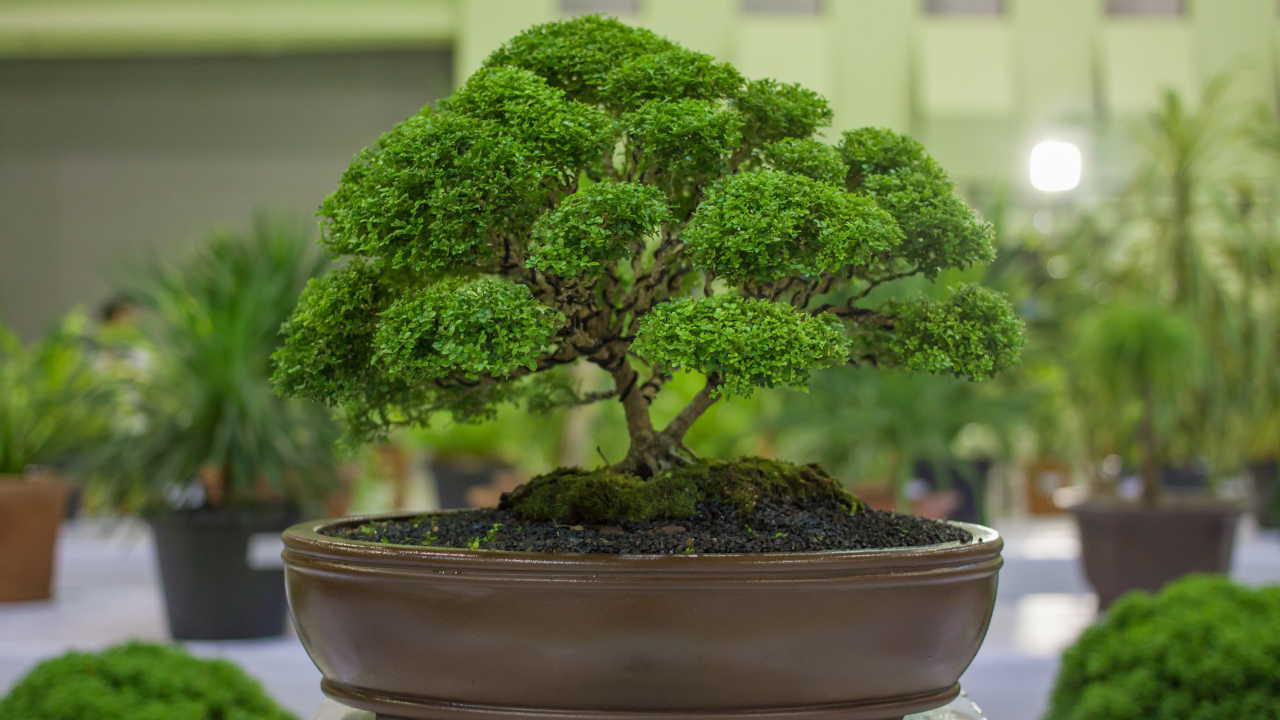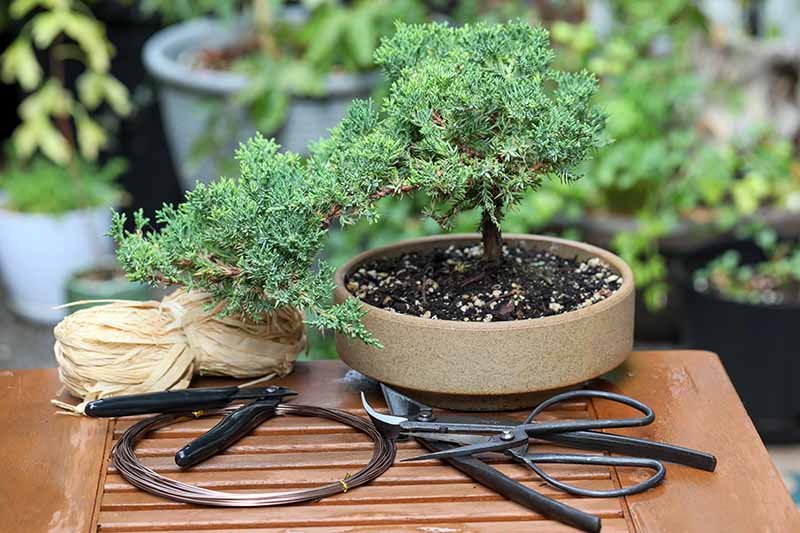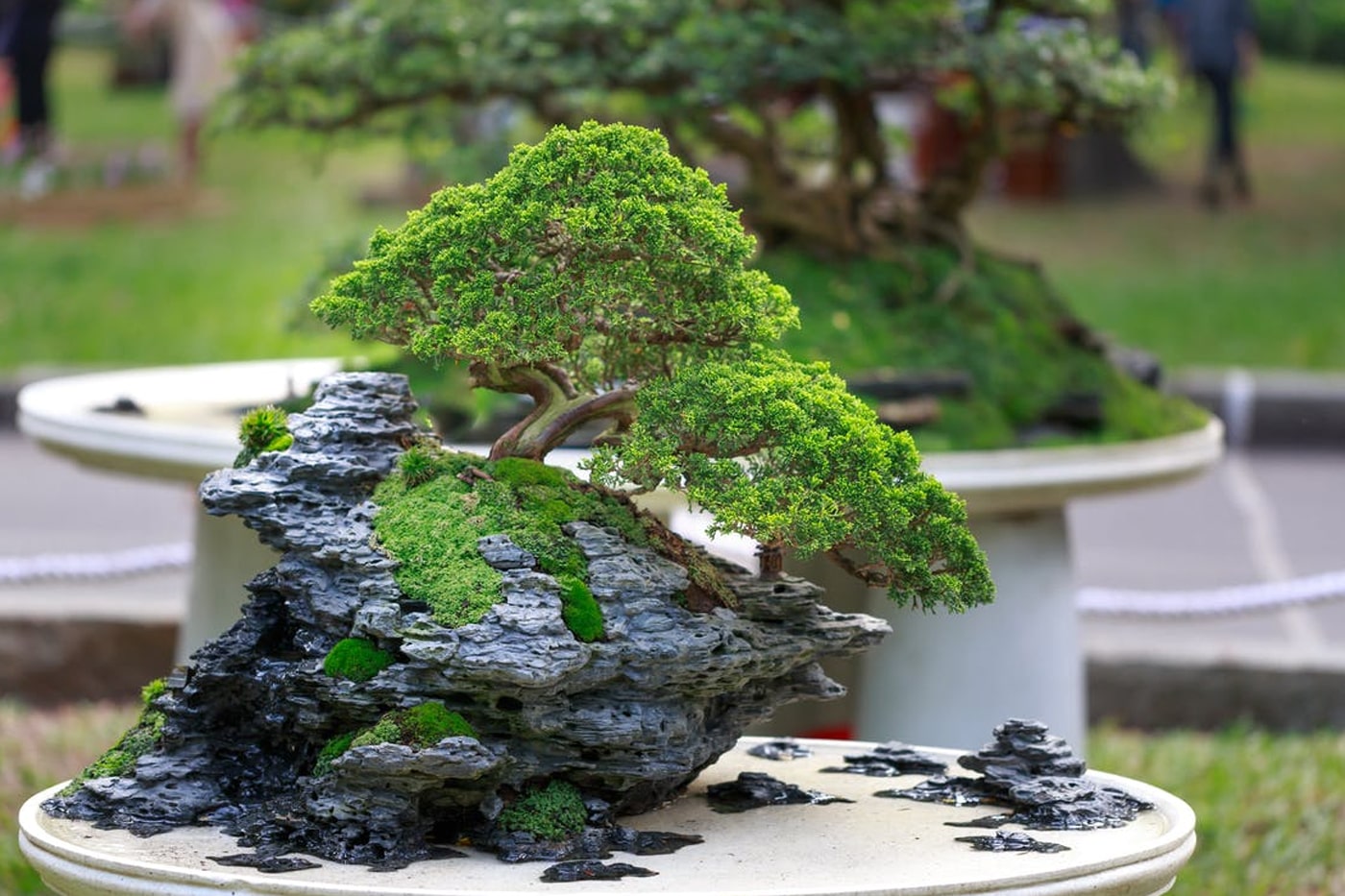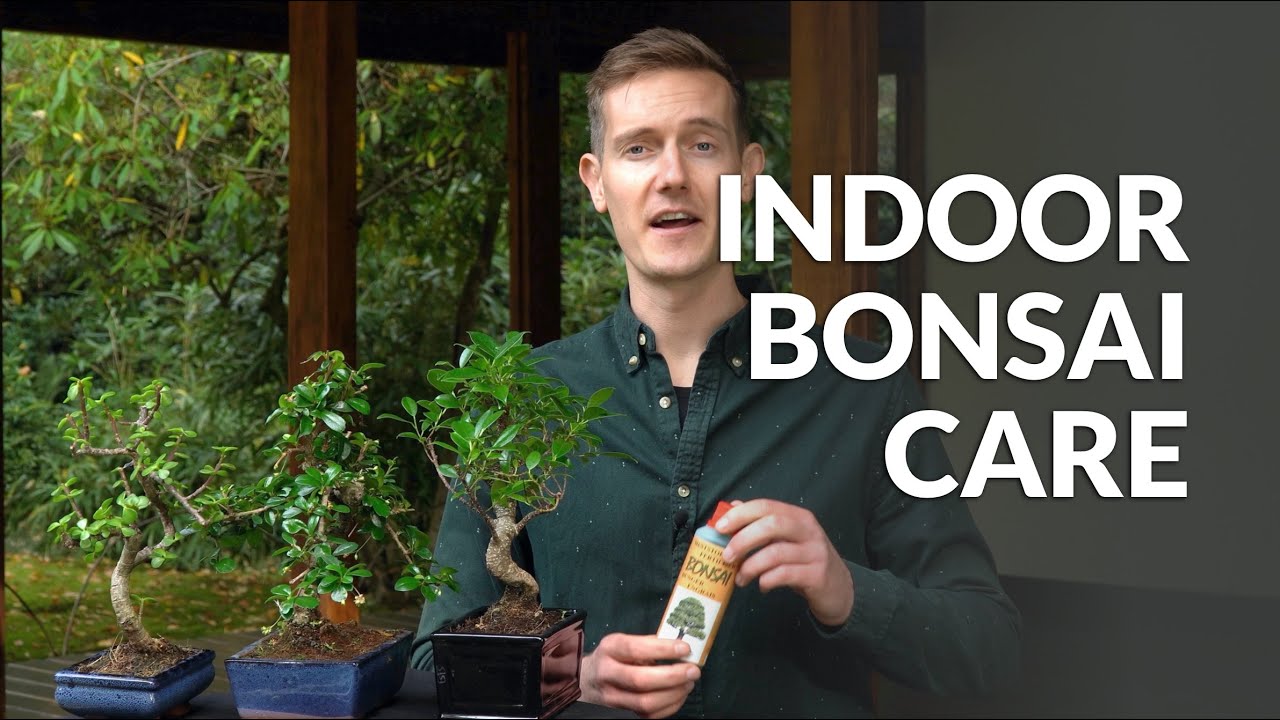We allow advertising on this website to support the blog. Some of content on this website was created with the help of AI.
Discover valuable tips on how to care for a bonsai tree, even if you have limited space. We will explore different aspects of bonsai tree care, such as pruning, watering, and positioning, to ensure that your tree thrives in a small environment. Whether you are a beginner or have some experience with bonsai trees, this guide will provide you with practical advice and techniques to help your bonsai tree flourish. So, let’s dive right in and learn how to care for a bonsai tree in a small space!
:max_bytes(150000):strip_icc()/caring-for-bonsai-trees-5082970-1-8b634f05993a4252925a0682ed7df41e.jpg)
How To Care For A Bonsai Tree In A Small Space
Caring for a bonsai tree can be a rewarding and fulfilling experience. These miniature trees bring beauty and serenity to any space, but when you have limited room to work with, it requires some extra attention to ensure their health and well-being. In this article, we will guide you through the process of caring for a bonsai tree in a small space, covering important factors such as space limitations, sunlight requirements, watering techniques, temperature and humidity maintenance, fertilizer application, pruning and shaping, repotting and soil maintenance, pest and disease prevention, air circulation, and more.
Consider the space limitations
Before diving into the details of caring for a bonsai tree, it is crucial to evaluate the space you have available. Bonsai trees come in various sizes, some more suitable for small spaces than others. Measure the area where you intend to place the bonsai and consider the height and width limitations. Take into account any furniture or other objects that may obstruct the tree’s growth. Once you have a clear understanding of your space limitations, you can proceed to the next step – researching different types of bonsai trees.
Research different types of bonsai trees
There is a wide variety of bonsai trees to choose from, each with its own unique characteristics and care requirements. Some bonsai trees are better suited for small spaces due to their natural growth patterns, staying compact and miniature throughout their lifespan. Research different types of bonsai trees that are known to thrive in small spaces. Consider factors such as their growth rate, sunlight and water requirements, and tolerance to various temperature and humidity levels. This research will help you make an informed decision and select a tree that will flourish in your limited space.
Choose a tree suitable for small spaces
After conducting thorough research, it is time to choose the bonsai tree that best fits your small space. Look for bonsai trees that have a slow growth rate, compact foliage, and shorter root systems. Some popular choices for small spaces include the Juniper bonsai, Chinese Elm bonsai, and the Pygmy Date Palm bonsai. These trees are known for their ability to thrive in confined areas and maintain their miniature form, making them ideal for small apartments or offices.
Providing Adequate Sunlight
Once you have chosen your bonsai tree, it’s important to create an environment that provides adequate sunlight. Sunlight is crucial for the tree’s photosynthesis, ensuring its overall health and growth. Follow these steps to provide the right amount of sunlight for your bonsai tree:
Identify a sunny spot in your small space
Look for a location in your small space that receives an ample amount of sunlight. Ideally, this spot should receive at least 6 hours of direct sunlight each day. Observe different areas throughout the day to determine which spot receives the most sunlight. This may be near a window, balcony, or patio.
Ensure the bonsai tree receives enough sunlight
Once you have identified the sunny spot, place your bonsai tree in a way that it receives direct sunlight. Be mindful of any obstructions that may cast shadows on the tree, blocking the sunlight. Adjust the positioning of the tree as needed, ensuring it gets maximum exposure to sunlight.
Use artificial lighting if necessary
If your small space does not receive sufficient natural sunlight, you can supplement it with artificial lighting. LED grow lights are a popular choice as they provide the necessary light spectrum for bonsai trees. Place the grow lights above the tree, keeping them at a suitable distance to avoid burns or damage. Set a timer to mimic natural daylight and ensure the tree receives the appropriate amount of light each day.
Proper Watering Techniques
Proper watering is crucial for the health and longevity of a bonsai tree. Unlike regular houseplants, bonsai trees require specialized watering techniques to maintain their miniature form and avoid issues such as root rot. Here’s how you can ensure your bonsai tree receives the right amount of water:
Understand the watering needs of your bonsai tree
Different types of bonsai trees may require varying amounts of water. Research the specific watering needs of your chosen bonsai tree and understand how frequently it needs to be watered. Factors such as climate, humidity levels, and pot size can affect the water requirements. Avoid overwatering or underwatering by understanding the tree’s specific needs.
Avoid overwatering or underwatering
Overwatering can lead to root rot and other fungal diseases, while underwatering can cause the tree to dry out and wither. It is important to strike a balance and provide just the right amount of moisture. Carefully monitor the soil’s moisture level by inserting your finger about an inch deep into the soil. If it feels dry, it’s time to water the tree. If it feels moist, wait a little longer before watering again.
Create a watering schedule
To maintain consistency in watering, create a watering schedule based on the needs of your bonsai tree. This schedule should consider factors such as the climate, humidity levels, and the tree’s growth rate. Generally, bonsai trees should be watered when the top layer of soil starts to feel slightly dry. Avoid creating a fixed schedule as environmental conditions may vary, but aim for regular and consistent watering.
Maintaining Proper Temperature and Humidity
Temperature and humidity play a crucial role in the health of a bonsai tree. Different types of bonsai trees have varying temperature requirements, so it’s important to understand the needs of your specific tree. Here’s how you can maintain proper temperature and humidity levels:
Keep the bonsai tree in the optimal temperature range
Most bonsai trees thrive in moderate temperatures, typically between 60°F and 75°F (15°C and 24°C). However, it is essential to research the specific temperature requirements of your chosen bonsai tree. Some trees may tolerate cooler temperatures, while others may require slightly higher temperatures. Avoid exposing the tree to extreme temperature fluctuations or placing it near drafty areas.
Monitor and maintain humidity levels
Bonsai trees originate from regions with high humidity levels, so it is important to recreate a similar environment in your small space. Use a humidity tray or a pebble tray filled with water to increase the moisture in the air surrounding the bonsai tree. As the water evaporates, it creates a microclimate of humidity. Regularly check the humidity levels around the tree and adjust accordingly.
Protect the tree from extreme temperature changes
Sudden temperature changes can be detrimental to bonsai trees. Avoid placing the tree near heating or cooling sources, as these can cause rapid fluctuations in temperature. Also, be cautious when moving the tree between indoor and outdoor environments, ensuring a gradual transition to prevent shock. Protect the tree from frost during winter months by providing appropriate insulation or moving it to a more suitable location.

Applying Fertilizer and Nutrients
To ensure the steady growth and health of your bonsai tree, it needs a regular supply of nutrients. Fertilizers provide essential elements that are necessary for the tree’s development. Follow these steps to effectively apply fertilizer:
Choose the right type of fertilizer for your bonsai tree
Different bonsai trees have varying nutrient requirements, so it’s important to choose a fertilizer that meets their specific needs. Slow-release organic or inorganic fertilizers are commonly used for bonsai trees. Organic alternatives such as compost tea or fish emulsion are also effective choices. Read the instructions on the fertilizer packaging carefully and follow the recommended dosage.
Follow the appropriate fertilizing schedule
Bonsai trees require fertilization during the growing season. Typically, fertilizing every two to four weeks during spring and summer is recommended. Reduce the frequency during the dormant period in fall and winter. Avoid fertilizing newly repotted trees for at least a month to allow their root system to recover. Dilute the fertilizer in water according to the instructions and apply it to the soil, avoiding direct contact with the leaves or trunk.
Use organic alternatives if desired
If you prefer an organic approach, various alternatives can provide organic nutrients to your bonsai tree. Compost tea, made from decomposed organic matter, is a natural fertilizer that enriches the soil and promotes healthy growth. Fish emulsion, derived from fish waste, is a rich source of nitrogen and can be diluted and applied as a liquid fertilizer. These organic alternatives are safe for the tree and the environment, providing a sustainable option for fertilizing your bonsai tree.
Pruning and Shaping
Pruning and shaping are essential aspects of bonsai tree care, and they contribute to maintaining its miniature form and aesthetic appeal. Pruning helps maintain the desired shape, encourages branching, and removes any unwanted or unhealthy branches. Follow these steps to effectively prune and shape your bonsai tree:
Learn the techniques of pruning
Bonsai trees require regular pruning to maintain their shape and structure. Familiarize yourself with the basic pruning techniques such as pinching, cutting, and trimming. Use sharp bonsai pruning shears to make clean cuts, reducing the risk of damaging the tree. Focus on removing any dead, diseased, or crossing branches. Additionally, pinch off the new growth to promote dense foliage and branching.
Shape the bonsai tree to maintain its miniature form
Shaping is an integral part of bonsai tree care, and it requires patience and attention to detail. Start by identifying the desired shape, such as formal upright, informal upright, or cascade. Use wire or bonsai shaping tools to gently bend and position the branches. Be cautious not to apply excessive force that may cause damage. Regularly monitor the tree’s growth and adjust the wiring or shaping as needed.
Remove any unhealthy or unwanted branches
Pruning also involves removing any branches that are unhealthy or disrupt the overall harmony of the bonsai tree. Look for signs of disease or pest infestation, such as discolored leaves or unusual growth patterns. Removing these branches will help prevent the spread of disease and maintain the tree’s health. Additionally, remove any branches that cross or interfere with the desired shape, allowing the tree to maintain its miniature form.

Repotting and Soil Maintenance
Bonsai trees require periodic repotting to ensure the health of their root system and maintain their miniature size. Repotting also allows you to refresh the soil and provide the tree with the necessary nutrients. Follow these steps to effectively repot and maintain the soil of your bonsai tree:
Know when to repot your bonsai tree
Repotting frequency varies depending on the type of bonsai tree and its growth rate. As a general guideline, most bonsai trees should be repotted every two to three years. However, it’s essential to monitor the tree’s root system and evaluate if repotting is necessary. If the roots are densely packed or beginning to circle the pot, it’s time to repot.
Use the correct soil mixture for repotting
Choosing the right soil mixture is crucial during repotting. Bonsai trees require well-draining soil that retains just enough moisture. Specialized bonsai soil or a mixture of akadama, pumice, and lava rock is commonly used. These components provide excellent drainage while promoting healthy root growth. Avoid using regular potting soil, as it retains too much water and may lead to root rot.
Monitor and maintain the soil’s moisture and pH levels
Regularly monitor the soil’s moisture levels to ensure it does not become too dry or waterlogged. Stick your finger into the soil and check its moisture content. Adjust your watering schedule accordingly. It is also recommended to periodically check the soil’s pH level using a pH testing kit. Most bonsai trees prefer a slightly acidic to neutral pH range. Adjustments can be made using organic soil additives or pH-adjusting products specifically formulated for bonsai trees.
Pest and Disease Prevention
Pests and diseases can affect the health and vitality of your bonsai tree. Regular inspection and proactive measures are essential in preventing and addressing any issues that may arise. Follow these steps to prevent and manage pests and diseases:
Regularly inspect the bonsai tree for pests
Regularly inspect your bonsai tree for any signs of pests or diseases. Look for small insects, webs, discoloration, or deformities on the leaves and branches. Common pests that affect bonsai trees include aphids, scale insects, spider mites, and mealybugs. Be thorough in your inspection, paying attention to both the upper and lower surfaces of the foliage.
Take prompt action if pests or diseases are detected
If pests or diseases are detected, take immediate action to prevent the infestation from spreading. Use organic or chemical treatments specifically formulated for bonsai trees. Follow the instructions carefully and treat the affected areas as directed. In severe cases, it may be necessary to isolate the infected tree to prevent the infestation from spreading to other plants.
Implement preventive measures to avoid future infestations
Prevention is key to maintaining a healthy bonsai tree. Implement preventive measures such as regular pruning to remove dead or infested branches, maintaining optimal humidity levels to discourage pest infestations, and using natural pest repellents such as neem oil or insecticidal soaps. Keep your bonsai tree in a clean environment, free from debris and fallen leaves, which may harbor pests or diseases.

Providing Adequate Air Circulation
Proper air circulation is crucial for the overall health and well-being of your bonsai tree. Good ventilation helps prevent issues such as fungal diseases and improves the tree’s respiration. Follow these steps to ensure adequate air circulation:
Ensure proper ventilation in the small space
In a small space, it’s important to promote air circulation by opening windows, using fans, or placing the tree near air vents. This ensures a fresh supply of air and helps prevent stagnant air from accumulating around the bonsai tree. Avoid placing the tree in closed, confined areas where air movement is limited.
Avoid placing the bonsai tree in a closed or stagnant environment
Stagnant air can lead to issues such as mold, mildew, and other fungal diseases. Always avoid placing your bonsai tree in areas with poor ventilation or high humidity, as these conditions create a favorable environment for pests and diseases. Ensure that there is sufficient space around the tree for air to circulate freely.
Promote air circulation for the tree’s overall health
Providing adequate air circulation not only prevents health issues but also contributes to the overall health and vigor of your bonsai tree. Fresh air helps the tree’s respiration and strengthens its immunity against pests and diseases. It also aids in the exchange of gases, facilitating photosynthesis and supporting healthy growth.
Conclusion
Caring for a bonsai tree in a small space requires attention to various factors such as space limitations, sunlight requirements, watering techniques, temperature and humidity maintenance, fertilizer application, pruning and shaping, repotting and soil maintenance, pest and disease prevention, and adequate air circulation. By following the proper care techniques outlined in this article, you can enjoy the beauty and serenity of bonsai trees even in limited spaces. Remember to research the specific needs of your bonsai tree, adjust your care routine accordingly, and watch your tree flourish and thrive in its small but nurturing environment.
:strip_icc()/conifer-bonsai-5b4a29c9-363681044cd84f8c927adf91f21ed9b2.jpg)



